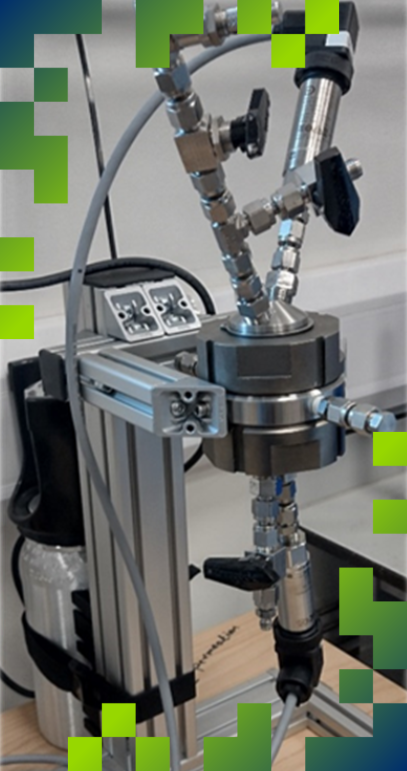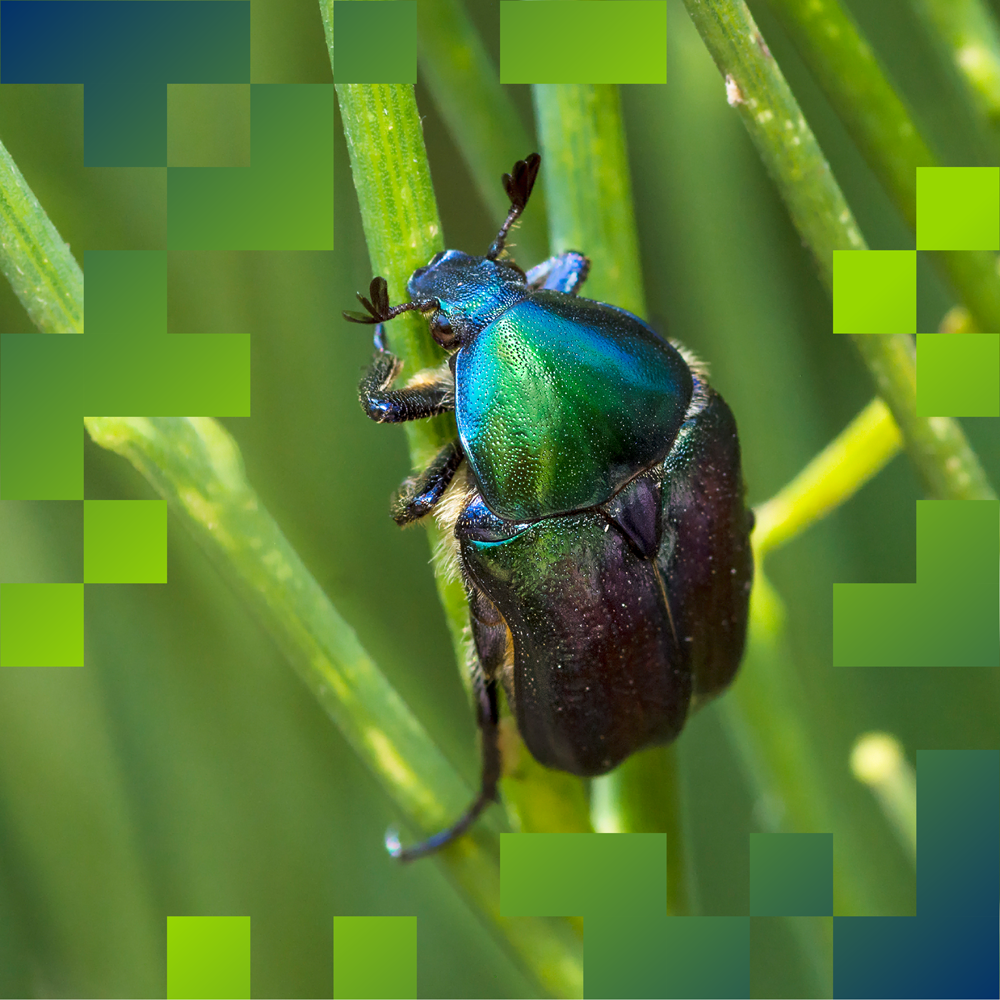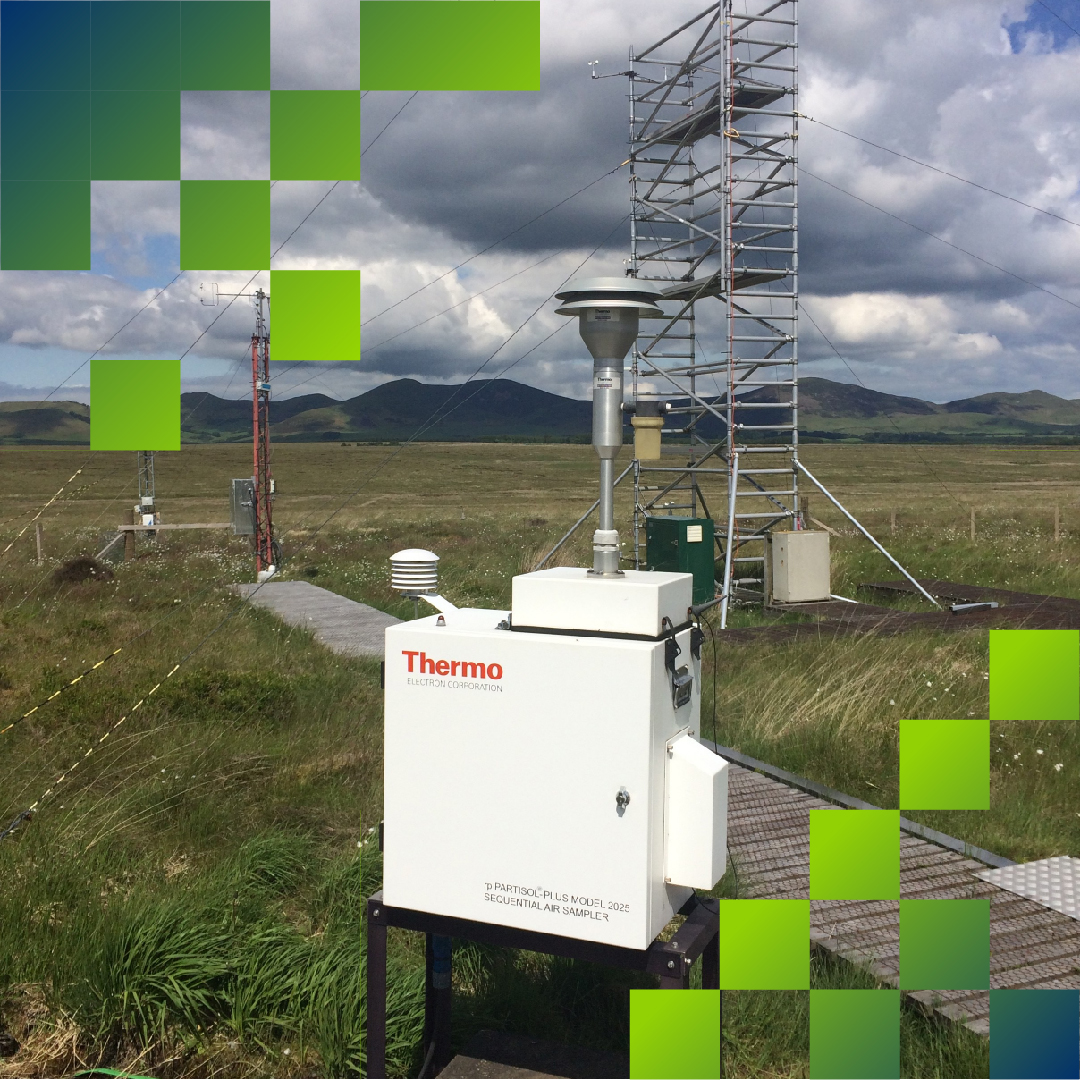.jpg)
Being able to produce, distribute and effectively use hydrogen can play a massive role in the decarbonisation of a wide range of industries such as manufacturing, transport, heat and general power.
By 2030, there will be an estimated 10 GW of low carbon hydrogen production capacity, enough to power the electricity of 10,000 homes for a year* (about the size of Teddington – where our main laboratory is based). Looking ahead, hydrogen is set to account for 20-35% of all electricity use in the UK by 2050.
With the development of such a new and critical infrastructure comes a multitude of measurement challenges. Scientists from our advanced materials team completed a Henry Royce project with the University of Manchester and the University of Warwick to characterise the performance of new nanocomposite liners in hydrogen fuelled vehicles.
We interviewed the project team to find out more.
We had been engaged in an ongoing discussion with the University of Manchester as we were both developing similar hydrogen permeability testing kits in our labs and were comparing results. At the same time, the University of Warwick were producing materials for use as hydrogen barriers. This seemed like a perfect opportunity to all work together to help push things forward in developing hydrogen solutions.
Our team investigated the barrier properties of a novel thermoplastic polymer system with 2D boron nitride nanoparticles, developed by the University of Warwick. We assessed the permeability of hydrogen gas through the material at pressures up to 100bar.
Powering vehicles with hydrogen requires the use of strong, lightweight structures, with excellent gas barrier properties, to store the gas and prevent it from escaping. The use of liners with enhanced resistance to hydrogen permeation enables the fuel tanks and pipelines to be constructed using polymer composites, providing the structural properties required.

The results of this project have significantly advanced our understanding of nanocomposite liners and the role they play as effective hydrogen barriers. This allows us to refine our requirements for future composite materials and screen out any unsuitable materials. It will help develop the capability to hone in on the most effective materials for gas transport and storage with less testing - saving time and cost for large-scale future projects.
Our team will continue to collaborate with the Universities of Manchester and Warwick to test composite materials, whilst looking to build out the UK’s testing capability. There is a possibility for the University of Warwick and University of Bristol to develop their own equipment which will provide enhanced comparability to our research.
* Measurement Challenges in the Hydrogen Sector, National Physical Laboratory, July 2024
** NPL estimate (assuming 100 % uptime)
In 2023, we joined a national consortium developing new capabilities to make it easier for UK policymakers to get the climate information they need. Led by the National Centre for Earth Observation (NCEO), we are working with partners on two projects: the Earth Observation Climate Information Service (EOCIS) and the Earth Observation DataHub (EODH) – both of which are funded through the National Environment Research Council (NERC).
Earth observation data from space provides immensely valuable knowledge of the state of our environment, the impact of climate change on our planet, and our options for mitigating the damage and adapting what we do. The process of transforming these complex datasets into trustworthy information usable by policymakers and society in general is challenging.

The Earth Observation Climate Information Service is currently working to create, maintain and expand regional and global climate data from space through its own service for the very first time in the UK. This trustworthy data will increase understanding of global climate-related issues ranging from melting polar ice to urban heat, and from changes in lakes and coastal waters, to landscape greenhouse gas emissions.
This information helps target mitigation and adaptation action in an effective manner. In addition to the global perspective available from earth observation, EOCIS is creating UK-focused data that can address local-scale issues, such as the climate risks to infrastructure.
To obtain sufficient density of information for local-scale applications, observations from many satellites need to be combined. We have an important role underpinning the quality of these satellite combinations by ensuring the observations across the sensors are compatible and calibrated to a common reference with quantified uncertainties.
EOCIS has established an online service where climate information will be able freely available to all to allow better informed decisions in meeting the UK’s net zero target.
In parallel, the Earth Observation Data Hub is a project developing a world leading next generation of computing architecture to better facilitate the opportunities presented by the EO sector. Providing a new ‘single point’ of access for EO data offerings from distributed public and commercial centres – including EOCIS data products and having a ‘single-point’ of access will help to address key challenges.
This work will provide a common standardised set of services, which the UK EO community can access and use to develop new EO services and tools.
We are developing a product quality assurance service for data on the hub, which includes the cataloguing of data quality information and the monitoring of product performance.
These projects will provide the UK with readily available and integrated data sets and information that will be an invaluable and trusted resource for science, policymakers and businesses.
Given the threats to biodiversity from pollution, climate change, and habitat destruction, there has never been a greater need for the biomonitoring of our planet.
Our scientists had a hunch – what if we could use data captured to monitor air quality and put it to use for another purpose, assessing the biodiversity of a region?
Using existing data from air quality networks, we forged an international collaboration to draw out critical information about the variety of species in specific regions based on eDNA, which is DNA from species that is airborne and present in the environment.
In 2024 NPL’s Air Quality team won the Royal Society of Chemistry’s Technical Excellence prize. We spoke to James Allerton, a scientist in the team, to find out more about the project and its success
This was a truly international collaboration spanning a number of years. In 2022 we provided our biologist collaborators with a set of historical air quality filter samples from the Auchencorth Moss station near Edinburgh and a set of filters from tests conducted with a non-network sampler based here at NPL’s Teddington site. After conducting eDNA analysis of our filters, the York University, Toronto Canada, Elizabeth Clare from York University, Toronto Canada and Joanne Littlefair from QMUL (now UCL), reported back to us that ~180 species had been detected from a variety of animals, plants, fungi, and insects. In 2023 we published in Current Biology a Correspondence article reporting our results – and importantly, the idea that air quality networks could potentially support global biodiversity monitoring efforts. The response was extraordinary: interviews with the co-authors, multiple media outlets reporting and discussing the article in different countries around the world.

When they told us they’d detected about 180 different species, it was a genuine “Wow!” moment, and proved that the efforts had paid off.
James Allerton
eDNA comes from cellular material released into the atmosphere by organisms including animals, insects, plants, and fungi and we have now shown that it can be detected on filters from aerosol samplers typically used in air quality networks.
It gives us information on what species are present in a particular region without the need for us to directly observe them.
Biologists have a range of methods for biodiversity monitoring, including the traditional methods of field campaigns conducted by experts in species identification. Technologies currently used for biomonitoring include aquatic eDNA analysis as a tool used to assess the biodiversity of habitats such as rivers and lakes.
Our collaborators working in biological sciences tell us that monitoring terrestrial biodiversity at country/continent-wide scales across time has been a challenge for decades – eDNA being inadvertently captured on filters from air quality networks is a potential treasure trove of new information for biodiversity research.

It was a case of being in the right place at the right time. In January 2022, our current collaborators (biologists Elizabeth Clare and Joanne Littlefair) had published a paper on their successful attempt to capture airborne animal eDNA on filters. After reading a publicity article about their study, I wondered if the filters we deploy on UK-based air quality networks were also capturing airborne eDNA as an accidental by-product. After contacting Elizabeth Clare, we decided to collaborate with her and her colleague Joanne Littlefair, and other participants. Without NPL’s management of air quality networks for the UK government and our team of scientists who operate the facilities for conducting aerosol science in the AES department, we wouldn’t have been able to do the work.
The most surprising part was just how many different species our biologist collaborators told us had been detected from the filters we’d provided for the pilot study. Neither I nor any of my colleagues are biologists, and so we had no preconceptions about which and how many species would be detected on the filters we supplied – when they told us they’d detected about 180 different species, it was a genuine “Wow!” moment, and proved that the efforts had paid off.
Although our initial study shows what’s possible, the next challenge is to rigorously validate airborne eDNA capture/analysis for use as a new biomonitoring tool – this of course is where we can really apply our expertise. In fact, as a follow-up to the pilot study, we have recently secured UKRI/NERC funding for a multi-collaborator project to assess various aerosol samplers, which sample particles in the air, for environmental biomonitoring through eDNA capture.
If you think about the number of air quality networks around the world, and how many filters are being regularly collected from monitoring stations on those networks, the potential eDNA dataset has barely been tapped. Beyond air quality networks, you could set up air samplers specifically to capture eDNA in habitats of conservation interest or monitor for pathogens which affect human health or agricultural production.

Our scientists apply their knowledge and expertise to many of the challenges facing society today. Our mission is to provide the measurement capability to underpin the UK’s prosperity and quality of life and we took the opportunity to share our expertise in partnership with the Royal Institution of Great Britain with a series of inspiring talks covering key topics in our modern world: precision timekeeping, understanding climate change and the potential of quantum technologies.
Consistently available and accurate timing is a commodity we often take for granted, but its integration with technology impacts us all. There is worldwide dependency on timing accuracy, it is key for phase synchronisation of the power grid, synchronisation of telecoms and broadcast networks, traceable timestamping for regulatory compliance in the financial sector and timestamps for safety critical data.
Measuring changes to the Earth’s atmosphere is a complex challenge. Understanding the impact that any climate mitigation actions have on our atmosphere requires information from many different sources and may use measurements which span decade-long timescales. TRUTHS, invented by Professor Nigel Fox at NPL, is a climate focused satellite mission, led by the UK Space Agency (UKSA) in partnership with several European states. Delivered by the European Space Agency (ESA), it will facilitate improved understanding of changes in the Earth’s climate and the response to the worlds net zero agenda.
“Professor Nigel Fox and I told the story of the TRUTHS mission and how it fits into NPL’s work in satellite Earth observation. It was great to see such a captivated audience and receive challenging and thought-provoking questions around the climate and our role in measuring it.” - Emma Woolliams, Principal Scientist in Earth observation and presenter of ‘Unleashing the power of satellites’.
Time is an invisible utility, and many people don’t realise just how crucial it is until we lose it. I hope that my colleagues and I were able to inspire the audience to think more deeply about time on this level and that they took away some new knowledge to share with others.
Dr Leon Lobo - Head of the National Timing Centre at NPL and presenter of “Why is precision timekeeping so important?"
We create the new facilities and deliver world-class research based on quantum phenomena. This enables the translation of quantum technologies and materials into practical applications and underpins new standards, accelerating the commercialisation of new products based on quantum systems. Dr JT Janssen our Chief Scientist explains the work NPL does, as quantum phenomena are set to change the world around us.
Our research and measurement solutions support innovation and product development. We work with companies to deliver business advantage and commercial success.
Contact our Customer Services team on +44 20 8943 7070